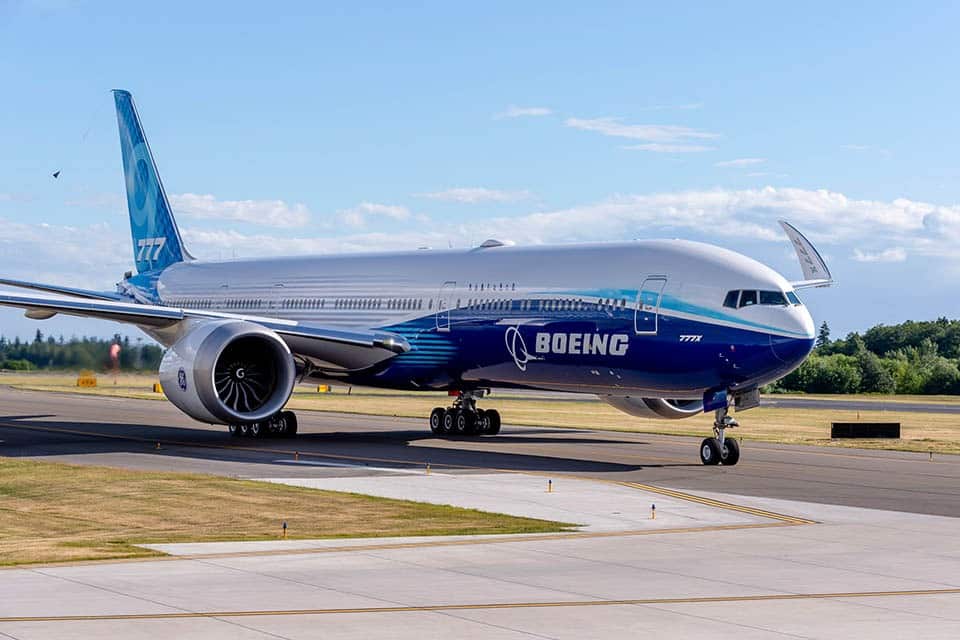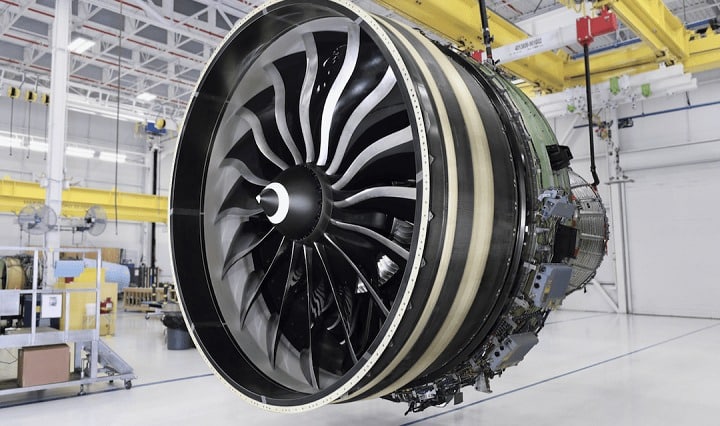A few years ago, GE first considered using 3D printing to manufacture turbine blades and other components (such as fuel nozzles) for its GE9X engine. The GE9X engine is the largest engine on any commercial aircraft and the driving force behind the next-generation Boeing 777X aircraft. Last year, GE Aviation purchased 17 Arcam EBM A2X machines and 10 Arcam Spectra H systems, and then sent them to facilities across the United States and Europe to print lightweight titanium aluminide (TiAl) blades for GE9X engines on low-pressure turbines. Finally, history was made when the first flight of the Boeing 777X and its dual GE9X engines took place about a year ago.
Bill Fitzgerald, vice president and general manager of GE Aviation’s commercial engine business, said: “Just 25 years ago when GE90 took the lead in developing new technologies for commercial aircraft engines on the Boeing 777, GE9X set a new standard for engine performance, thanks to GE’s integration The most advanced technology developed in the past decade.”
The GE9X has carbon fiber folding wingtips and is known as the world’s largest twin-engine jet aircraft, and was also rated due to a 10% reduction in fuel usage and emissions (due to the new design and GE9X with 3D printed parts) The most fuel-efficient model. Advanced fiber composite materials can reduce the number of 3D printed turbine blades in GE9X from 22 to 16, and the number of 3D printed fuel nozzles for the engine from 20 to one. For the additive manufacturing industry, this is definitely a success story.
Now, there is more good news: GE Aviation has announced that the GE9X engine has reached an important milestone in obtaining the Federal Aviation Administration (FAA) certification.
“This milestone has been accomplished thanks to the tremendous efforts of the GE9X team and our partners. The GE9X engine has been through a rigorous and thorough certification and testing process. We are pleased with the performance of the engine, which has been validated through extensive ground and flight testing. We are excited to deliver a mature, state-of-the-art product to operators around the world,” stated GE9X program general manager Karl Sheldon.
Compared with any other engine in the same product, the operation of the GE9X engine reduces haze emissions, and the specific fuel consumption (SFC) is reduced by 5%, and compared with the GE90-115B, its SFC is reduced by 10%. In order to obtain FAA certification, the GE9X test engine completed approximately 5,000 hours and 8,000 cycles, while FAR (Federal Aviation Regulations) Part 33 certification involves 9 test engines. By obtaining FAA certification from GE9X, GE Aviation has successfully developed an update of its commercial jet engines (including CFM LEAP engines and GEnx for Boeing 787 Dreamliner).
The GE9X has carbon fiber folding wingtips and is known as the world’s largest twin-engine jet aircraft, and was also rated due to a 10% reduction in fuel usage and emissions (due to the new design and GE9X with 3D printed parts) The most fuel-efficient model. Advanced fiber composite materials can reduce the number of 3D printed turbine blades in GE9X from 22 to 16, and the number of 3D printed fuel nozzles for the engine from 20 to one. For the additive manufacturing industry, this is definitely a success story.
Now, there is more good news: GE Aviation has announced that the GE9X engine has reached an important milestone in obtaining the Federal Aviation Administration (FAA) certification.
“The GE9X team and our partners have made great efforts to achieve this milestone. The GE9X engine has passed a rigorous and thorough certification and testing process. We are satisfied with the performance of the engine, which has passed extensive Ground and flight tests have been verified. We are very happy to provide mature and advanced products to operators around the world.” said Karl Sheldon, general manager of the GE9X program.
Compared with any other engine in the same product, the operation of the GE9X engine reduces haze emissions, and the specific fuel consumption (SFC) is reduced by 5%, and compared with the GE90-115B, its SFC is reduced by 10%. In order to obtain FAA certification, the GE9X test engine completed approximately 5,000 hours and 8,000 cycles, while FAR (Federal Aviation Regulations) Part 33 certification involves 9 test engines. By obtaining FAA certification from GE9X, GE Aviation has successfully developed an update of its commercial jet engines (including CFM LEAP engines and GEnx for Boeing 787 Dreamliner).

GE remains committed to continuing to cooperate with Boeing to complete its 777X flight test plan and put it into use, and has created 8 GE9X test engines and 2 spare parts and sent them to Seattle to test aircraft on 4 777X Used on. GE Aviation is working hard to complete factory acceptance testing and has assembled multiple GE9X production engines.
Other participants in the GE9X engine program are Safran Aviation Booster, Safran Aircraft Engines, IHI and MTU Aero Engines.



